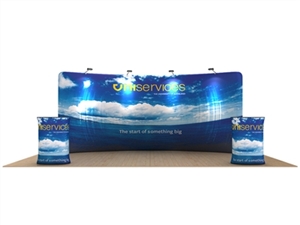|
Let There Be Lights Basic Lighting for Successful Displays
Professionals who specialize in lighting solutions for events and offices can be effective but they can also be expensive. What if you don’t have the time or budget to hire a professional? You can still create visually pleasing, effective lighting at an event as long as you learn a few of the basics.
Getting Started It is said that we base around eighty percent of our decisions on what we see. Our sense of vision is a collaboration between the brain, the eye, the light and the object. If lights are placed in an unflattering way, we will end up with a negative feeling towards what we are seeing, whereas a good light setting will create positive feelings. Try pointing a flashlight under your chin in front of a mirror, and you will know what we are talking about. Light has an enormous impact not just upon how we see, but how we feel about what we’re seeing. Color Reflection and Light Strength The color we see in objects depends on the way the object interacts with light. It is not the object itself that contains the color -- it is the light that shines on it that reflects its color. Any light on the visual spectrum that strikes an object is reflected to our eyes and contributes to the color appearance of that object.  Lighting Conditions Colors appear differently under varying lighting conditions. Different light sources can ruin or enhance colors. In a store, for example, good lights can make us buy more tomatoes by making them look redder, riper, more shiny. Booth lighting should be used to draw attention to your product or message. A simple fluorescent light won’t do that, no matter how great your booth may look otherwise. Many people think good lighting means simply using lots of light. However, a wall flooded with light will only become an overbright wall – it will not highlight your message. To catch the eye of the visitors and communicate your message, you need to create a strategic balance between dark and light areas. A large stage light provides a great deal of illumination, but it can make your booth look flat and listless. However, using spotlights with thinner beams will lift the objects or messages forward while toning down the surrounding area. Sometimes it helps to think like a theatrical lighting designer – think of your booth as a stage, and your messages as your main characters. Many people have no problem spending lots of time and money creating their booth displays but put little effort into lighting. This is a mistake that can end up costing you sales. You don’t have to hire a professional, but familiarizing yourself with the basics and being willing to go beyond standard fluorescent schemes will pay off in the end. |